Celebrate Asia: For Palawan's islanders, a beautiful but tough life in paradise
In our ongoing series looking at unique people, places and food in the region, CNA Lifestyle met the Tagbanua, the indigenous people who live in the famous Coron Island in Palawan, Philippines.
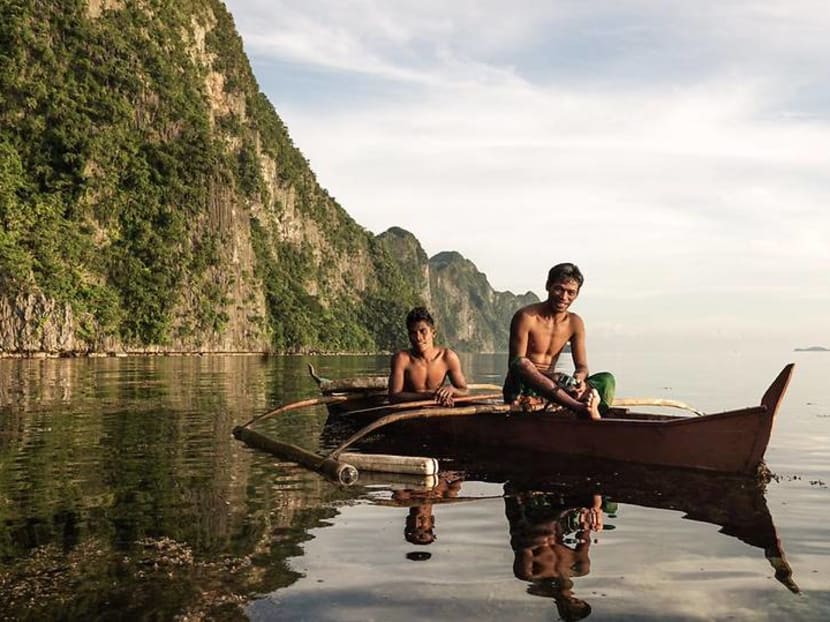
Alben Dapi and Robert Abril, Tagbanua people who live on Papagalen Beach on Coron Island in Palawan, Philippines. (Photo: Samuel Footner/Red Carabao)
On this small patch of tropical paradise, I found myself listening to the saddest perk-me-up song one could possibly hear at eight in the morning.
“How did it come to this? My heart is wounded…” someone crooned, plucking away at a guitar, while others gathered around, sipping freshly brewed coffee.
A couple more heartbreak ballads later and the day begins for them. Some jump on a small boat and head to another part of the island to collect fresh water, while others prepare breakfast for the tourists who have stayed for the night on their ancestral land.
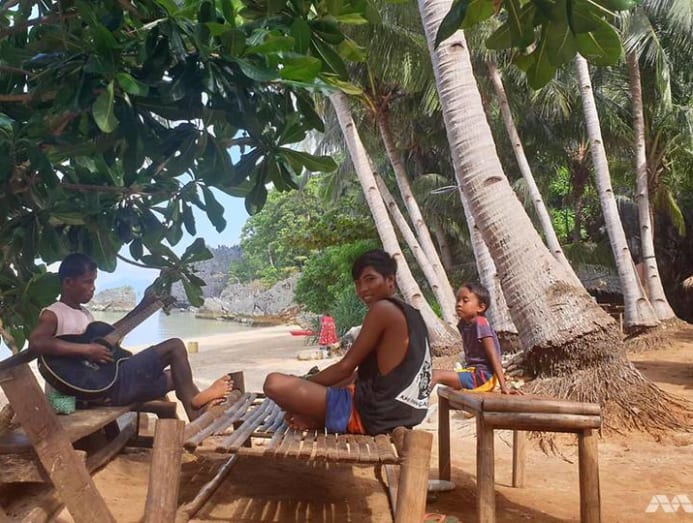
There's something quite apt about listening to a sad song amid beautiful scenery. I’m on Papagalen Beach, one of the white sand beaches along the western coast of Coron Island in the Philippine province of Palawan, where many of the indigenous Tagbanua people live.
READ: Celebrate Asia: Inside a village of mask makers and dancers in Indonesia
“Before, life was harder. It’s a bit better now with the tourists,” said Tata Ondes, one of the people gathered that morning and the elderly patriarch of the family who lives there. He doesn’t know how old he is but he has lived on this same strip of beach since he was young, just like his parents and their parents.
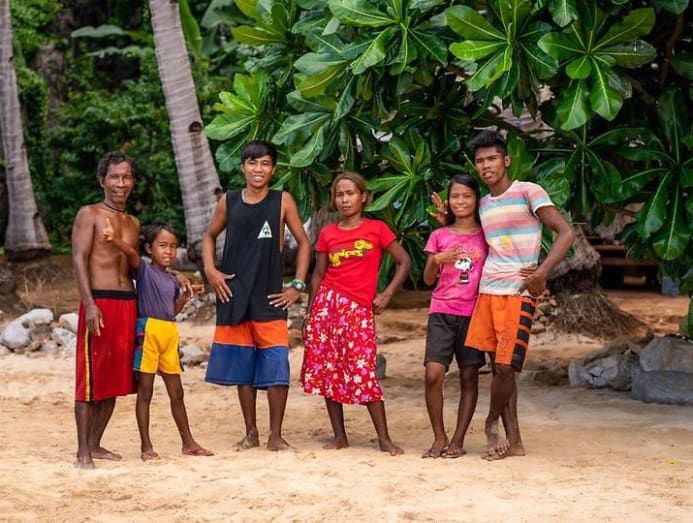
Back then, he said, all they mainly did was fish, but for the past year or so, his family has been working closely with a social venture called Red Carabao, which organises island-hopping expeditions and immersive experiences with the local folk.
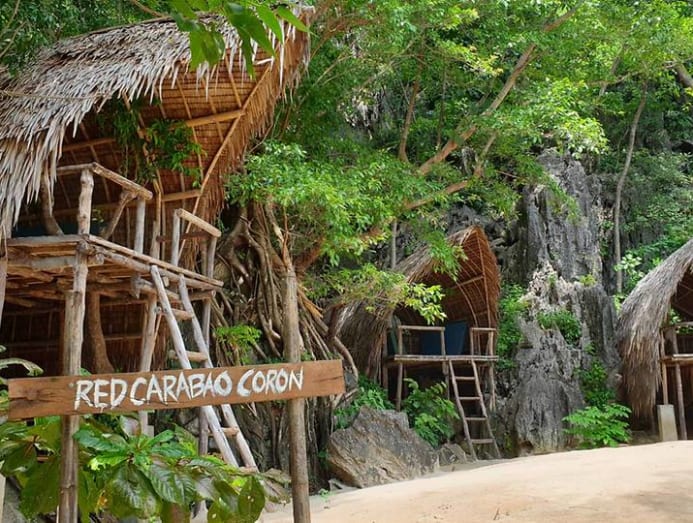
It’s an interesting set-up – on one side of the beach are very basic guest huts and on the other side is where Tata Ondes and the rest live and help maintain the surroundings. It’s one of the rare tourist ventures where the Tagbanua are proactively involved in the day-to-day running of their own place.
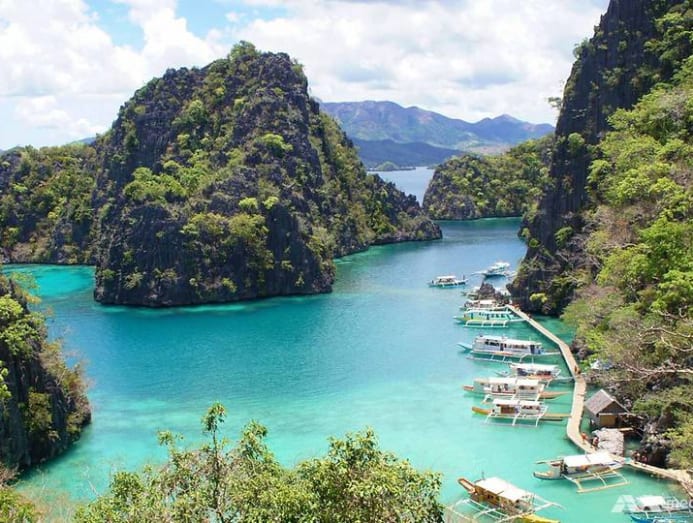
THE REAL PEOPLE OF CORON ISLAND
In recent years, Coron has become a hot tourist destination thanks to the many picturesque islands dotting the area, including its main draw, Coron Island itself.
READ: Island-hopping: Feeding giraffes and exploring WWII shipwrecks in Palawan
But very few of the island-hopping travellers are aware or take notice of the very people that call these Instagram-friendly places home.

Perhaps they should. The Tagbanua are regarded as one of the oldest ethnic groups in the Philippines, and some reckon they’re direct descendants of the “Tabon Man”, one of the oldest human bones found in the country.
More importantly, Coron Island is theirs – in the late 1990s, the government announced they were officially given the right to manage and protect the place they’ve long considered sacred land.
While this has resulted in some financial benefits – thanks mainly to opening some places on Coron Island to tourists, such as the famous Kayangan Lake in 2001 – it hasn’t quite trickled down to many Tagbanua, especially those in the literal fringes of the island.
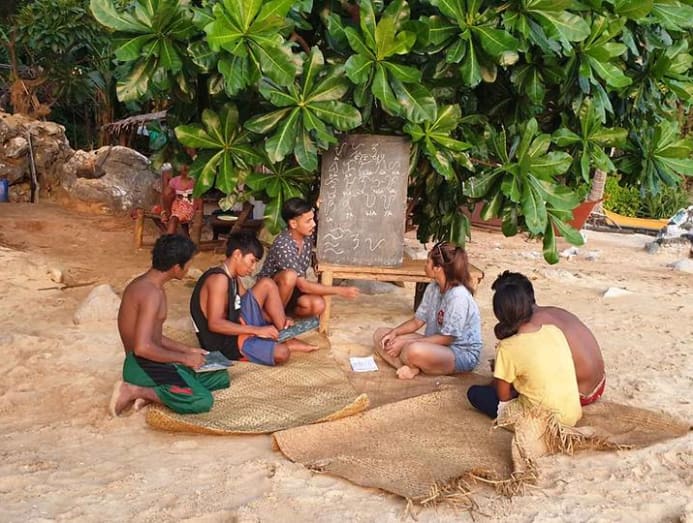
“Majority of them have no involvement in tourism and are disenfranchised,” explained Aldrich Anderson, a 31-year-old Filipino who started Red Carabao in the hopes of finding a more sustainable approach to tourism, which meant getting the Tagbanua more involved.
Or at least the ones on the beach where Red Carabao set up camp. According to Anderson, the family they work with gets salaries.
Tata Ondes, as the main man who owns Papagalen Beach, gets a financial support of US$150 (S$207) a month, while the boys on the island have a daily salary of 350 pesos (S$9), which is more than what’s paid on the mainland.
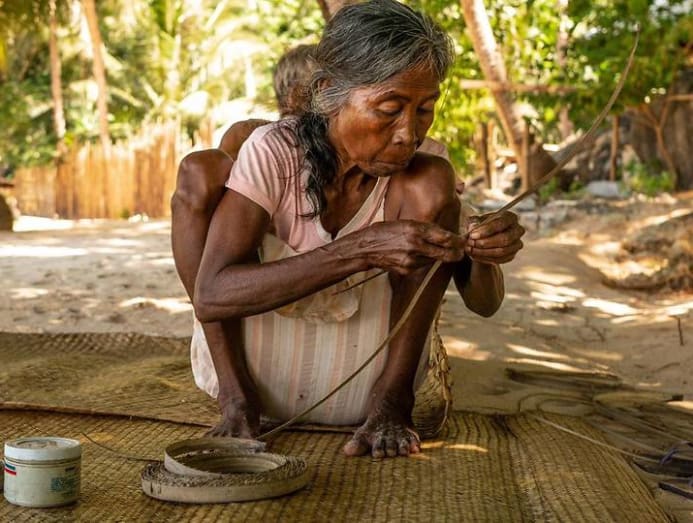
And they also get paid separately for the different projects and activities they hold, such as traditional spearfishing, coffee brewing and mat weaving. For the latter, they bring in Tata Ondes’ sister from “next door”, which is just the next beach – everyone’s related to everyone along the coast, it seems.
Just a couple of months ago, Red Carabao also sent three of the Papagalen Beach boys to the main town to work at Hop Hostel and pick up some new skills along the way, such as cooking.
While what they earn may seem little to outsiders, these go a long way for the Tagbanua who mostly earn their keep from selling their catch in town or collecting meager “entrance fees” for tourists who want to go snorkelling on the reefs in front of their respective beaches.
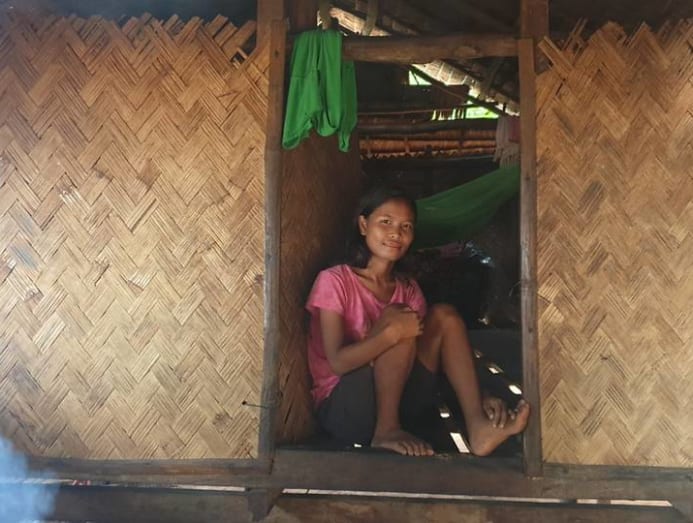
STRUGGLING WITH WATER AND FOOD
After staying for a couple of days on Papagalen and hanging out with the Tagbanua family, it’s not hard to see just how tough island life is for them.
Freshwater is hard to come by – and they mostly rely on rainwater gathered from roofs, which they collect in containers. During the dry season, they have to travel for two hours to another beach where there’s a freshwater spring.
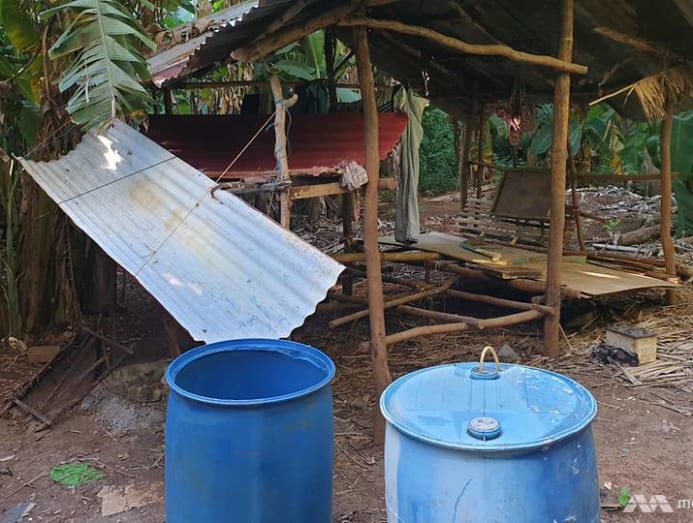
The irony is that there’s a huge freshwater lagoon just behind them – except that they can’t access it because it’s a sacred place that they’ve never even been to. And if it’s even an option, there’s a steep limestone cliff face straight out of a King Kong movie that’s impossible to climb over.
Food is also subject to the whims of the sea – just how much fish, lobster, squid and octopus they can catch depends on the season. Whatever little vegetables or plant food that can be had on the island are all thanks to a bit of foresight from their ancestors who planted trees like moringa and tamarind all those years ago.
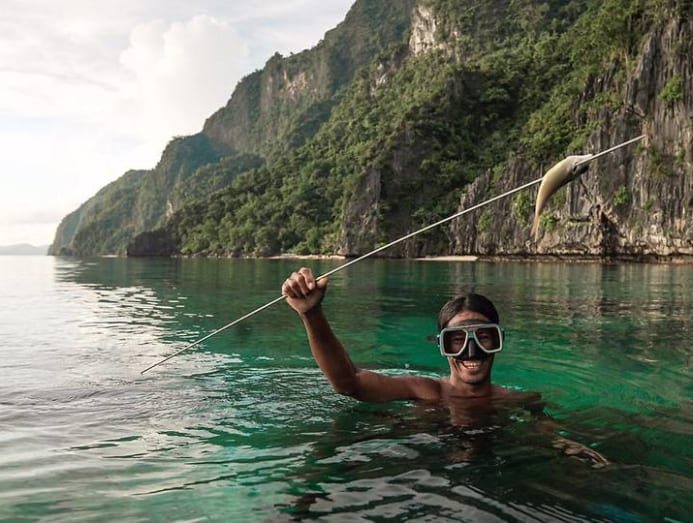
Even some of the tubers and root crops one would think would be easy pickings aren’t quite so easy – some require a complicated way of preparing to rinse off toxins that would make you ill.
Some of the more unusual things they sell are the edible bird’s nests and sea cucumbers.
The former is something Palawan is known for – the saliva of a certain type of swiftlet they call “balinsasayaw” which they gather from cliff walls or caves. Tata Ondes recalled how he used to gather these as a young boy. “It’s a bit salty and you’ll make it into a soup, which is good for your body,” he shared, adding that each rock “hole” would often have 12 nests – which they’d leave alone if there were still eggs or chicks inside, of course.
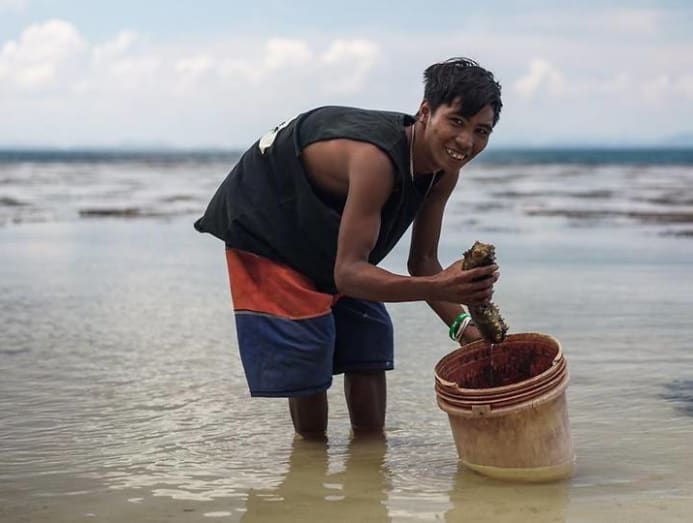
Sea cucumbers – or “balat” as they called it – is slightly easier to get. “We go looking for them at night, and it’s not hard to find – sometimes they stand up like candles,” explained Hilben, one of the Papagalen boys.
In fact, during my brief stay, they were boiling some of these and setting them to dry before selling them in the market in the mainland. A dozen of these would fetch 3,000 pesos – enough for them to buy rice.
Do they know what it’s for? “From the market, they’re sold to Manila but we don’t know for what,” shrugged Hilben.
The market in town is like their lifeline to the outside world – and even to other Tagbanua. According to Anderson, there’s one particular spot where they would all dock their boats to offload their catch and where they would pass old-school notes to each other, especially since there’s no phone signal on the other side of Coron Island where some of them live.
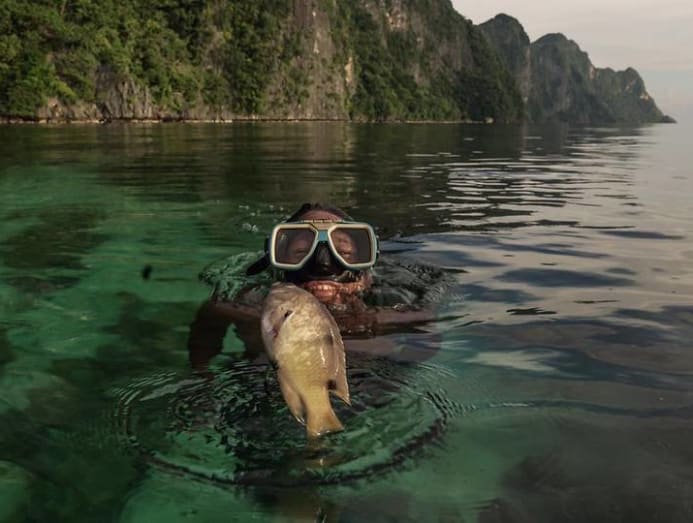
FROM TECHNO TO BUILDING HUTS
But while it’s a way of living that some might think is a bit too back-to-basics for comfort, it’s not as if the Tagbanua live in a bubble. Solar panels, which have become cheaper in recent years, have replaced car batteries as their main source of electricity. And on one of the days during my stay, the boys were having a blast playing local techno music they called “budotz” on speakers – via bluetooth.
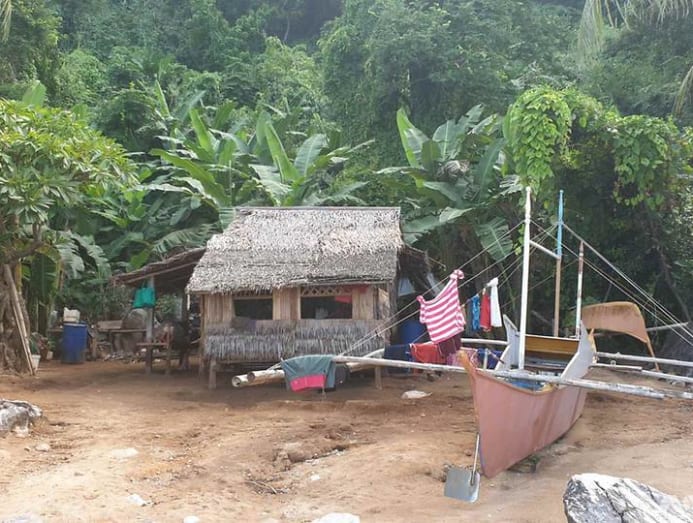
“I’d love to go back to school,” said Hilben. Having reached seventh grade before stopping, the 20-year-old grandson of Tata Ondes is the only one on Papagalen who can read and write (they rest of the boys can write their names). And after having a taste of the outside world as one of the three who were sent on the hostel internship, he’s keen on expanding his knowledge. “I love cooking and hope I can be a cook in a cruise ship one day,” he shared.
But for now, he’s playing an important role on Papagalen – helping to cook meals for the guests and assisting in the day-to-day operations, which will pick up very soon with the next batch of tourists.
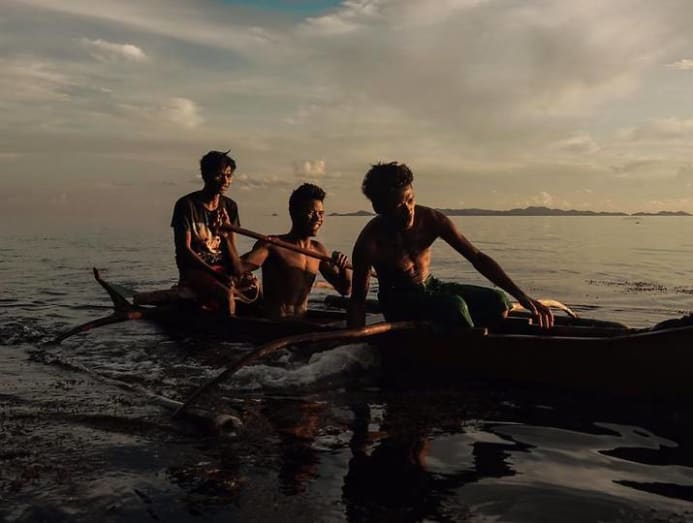
Before I left, Anderson, Tata Ondes, Hilben and the rest of the folks on Papagalen were in deep discussion about the next Red Carabao project. One of the huts was destroyed by a passing storm and had to be rebuilt before the next guests come in a week’s time, so they’re finalising just how much wood they’ll need to bring over for the reconstruction.
It’s the next big project for everyone involved on this small strip of white beach, but with the way everyone’s invested in it, they’ll probably finish it – before the next batch of visitors to stay over wakes up to the saddest break-up ballad they’ll ever hear in the morning.
To find out more about Celebrate Asia, visit cna.asia/celebrate-asia.





